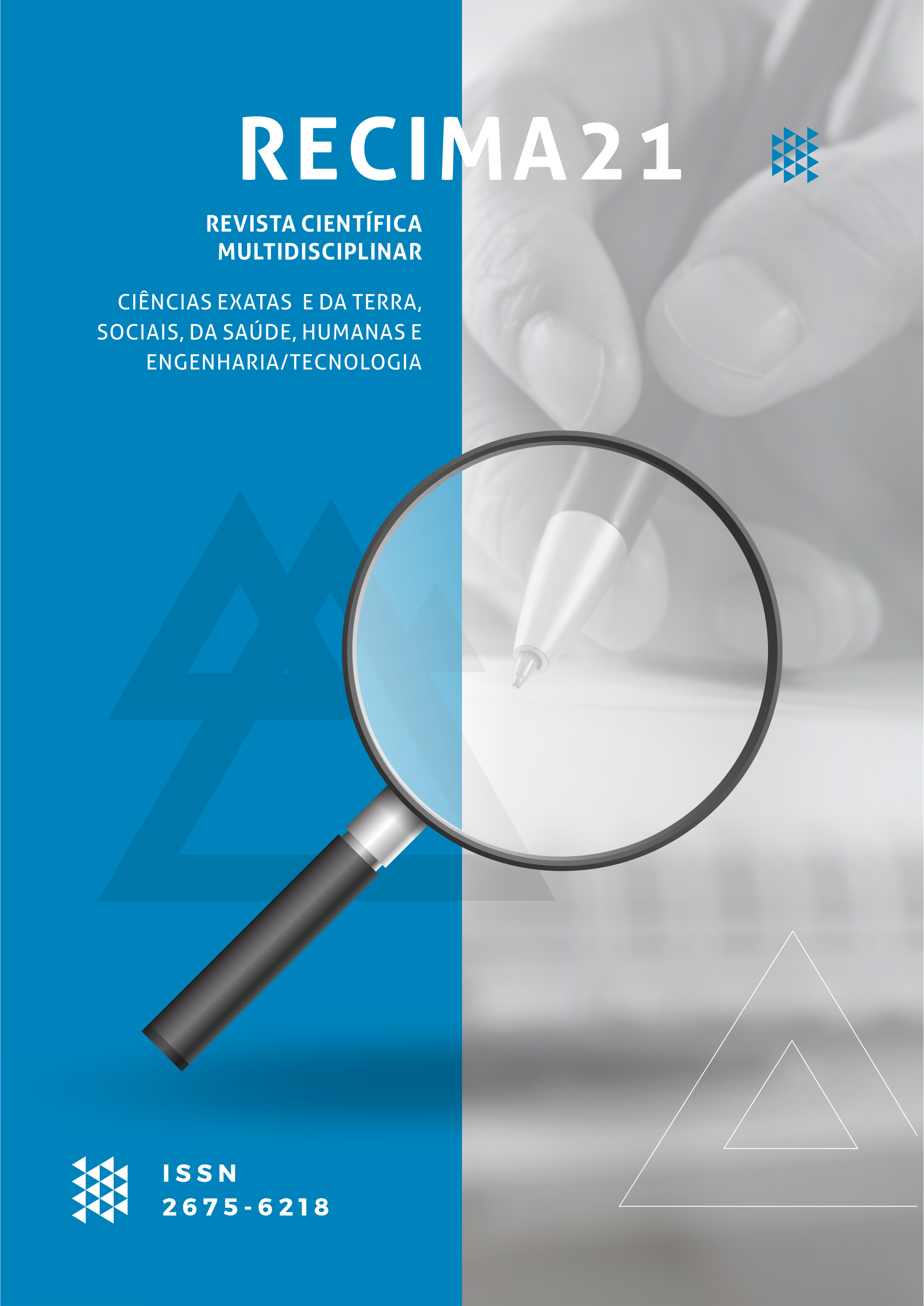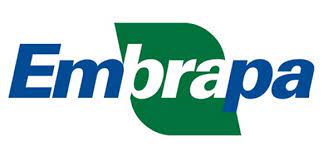NATURAL COLORANTS: IMPORTANCE AND SOURCES OF OBTAINMENT
DOI:
https://doi.org/10.47820/recima21.v3i3.1165Keywords:
Obtaining, Colorants, Anthocyanins, Betalains, CurcuminAbstract
Colorings play an important role in foods as they are a parameter of consumer attractiveness. ANVISA considers colorant as the substance or mixture of substances that have the property of conferring or intensifying the color of food and drink, in addition to having oxidizing power. In food production there are two classes of colorants, artificial and natural. Artificial dyes are those that are obtained by chemical synthesis and natural ones are obtained from natural matrices, such as vegetables. Indigo blue, purple and red tones were the most prominent dyes in history where they were used in fabrics, body paintings, houses and objects, in rock art, to dye hair, these were extracted from animals, fruits, flowers, bark and plant roots. Among the main natural food colors stand out annatto, cochineal carmine, anthocyanins, betalains and curcumin. The main extraction methods found were maceration extraction, supercritical fluid extraction, enzymatic extraction, pressurized liquid extraction, subcritical water extraction, pulsed electric field extraction, microwave assisted extraction, controlled instantaneous pressure drop extraction and ultrasound-assisted extraction.
Downloads
References
ANASTÁCIO, L.B., OLIVEIRA D.A., DELMASCHIO, C.R., ANTUNES, L.M.G., CHEQUER, F.M.D., (2016). Corantes Alimentícios Amaranto, Eritrosina B e Tartrazina, e seus possíveis Efeitos Maléficos à Saúde Humana. Journal of Applied Pharmaceutical Sciences – JAPHAC; 2(3): 16-30.
ARAÚJO, E. M. (2007). Corantes naturais para têxteis-da antiguidade aos tempos modernos. Conservar Património, n. º 3 e 4, p. 37 – 49.
BERMUDEZ-AGUIRE D. (2017) Ultrasound: Advances in Food Processing and Preservation. 1a. ed. London: Elsevier.
BORGES, M. E.; TEJERA, R. L.; DIAZ, L.; ESPARZA, P.; ILBANEZ, E. (2012) Natural dyes extraction from cochineal (Dactylopius coccus). New extraction methods. Food Chem., v.132, p. 1855-1860.
BRATES, C. et al. (2005). Las evidencias de la industría Del Añil em La Cuenca Copan-Ch’orti’. In: SIMPOSIO DE INVESTIGACIONES ARQUEOLÓGICAS EN GUATEMALA, 18, 2004, Guatemala. Anais do XVIII Simpósio de investigaciones arqueológicas en Guatemala, Guatemala: Aso-ciación Tikal, p. 1-18.
BUZANELLO, Rosana Aparecida da Silva. Nanoencapsulação de curcumina em polímeros biodegradáveis/biocompatíveis. 2013. 96 f. Dissertação (Mestrado em Tecnologia de Alimentos) - Universidade Tecnologia Federal do Paraná.
CODEVILHA, C., BARIN, J., SILVA, C., SILVA, T., & MENEZES, C. (2015). Incorporação da curcumina em sistemas nanoestruturados: revisão. Revista do Centro de Ciências Naturais e Exatas – UFSM.
CORRADINI, M.G. (2018). Synthetic Food Colors. Amherst: Elsevier.
ESCUDERO-GILETE, M. L., & ROMERO, I. M. V. (2017). Colorantes alimentarios. In I. Mateos-Aparicio (Ed.), Aditivos alimentarios (108–142). Madri: Dextra Editorial.
FREITAS, V., (2019) O mundo colorido das antocianinas, Rev. Ciência Elem., V7(2):017.
GALAFFU N., BORTLIK K., MICHEL M. (2015). An industry perspective on natural food colour stability. Colour additives for foods and beverages. Woodhead Publishing Series in Food Science, Technology and Nutrition. p. 91–130.
GAWAI, K.M., MUDGAL, S.P., PRAJAPATI.J. B. (2017). Stabilizers, Colorants, and Exopolysaccharides in Yogurt. Yogurt in Health and Disease Prevention, 49-68.
HAN, S. F., JIN, W., YANG, Q. (2019). Application of pulse electric field pretreatment for enhancing lipid extraction from Chlorella pyrenoidosa grown in wastewater. Renew Energy. 233-239.
HATAMI, T., MEIRELES, M. A. A., AND CIFTCI, O. N. (2019). Supercritical Carbon Dioxide Extraction of Lycopene from Tomato Processing By-Products: Mathematical Modeling and Optimization. J. Food Eng. 241, 18–25.
KEENAN, D. F., BRUNTON N. P., GORMLEY T. R., BUTLER F. (2010). Effect of thermal and high hydrostatic pressure processing on antioxidant activity and colour of fruit smoothies. Innovative Food Science & Emerging Technologies, 11(4): p. 551-556.
KHEIRKHAH H., BAROUTIAN S., QUEK S.Y. (2019). Evaluation of bioactive compounds extracted from Hayward kiwifruit pomace by subcritical water extraction. Food Bioprod Process; Issue 115:143-153.
KUMAR A, VISHWAKARMA HS, SINGH J, DWIVEDI S, KUMAR, M. (2015) Microbial pigments: production and their applications in various industries. Int J Pharm Chem Biol Sci 5:203–212.
LESTARI, M. & INDRAYANTO, G. (2014) Chapter three – Curcumin. Profiles of Drugs Substances, Excipients and Related Methodology, vol. 39.
MAHMOOD, K., ZUBER, M., SALMAN, M., ANJUM, M. ET AL. (2015). Recent developments in curcumin and curcumin based polymeric materials for biomedical applications: A review. International Journal of Biological Macromolecules, 81, 877-890.
MARCHI, J., TEDESCO, L., MELO, A., FRASSON, A., FRANÇA, V., SATO, S. & LOVATO, E. (2016). Curcuma Longa L., o açafrão da terra e seus bemefícios medicinais. Arquivo de Ciências da Saúde da UNIPAR, 20, 189-194.
MARTINS, N. et al. Food colorants: challenges, opportunities and current desires of agro- industries to ensure consumer expectations and regulatory practices. Trends in food science & technology, 2016. v. 52, p. 1–15.
MELLO, V. M., SUAREZ, P. A. Z. (2012) As formulações de tintas expressivas através da história. Revista Virtual de Química, v. 4, n. 1, p. 2-12.
MENDOZA, B.; EDUARDO, V.; LARA, G.; LIZBETH, J. (2019). Comparación del mercado de carmín de cochinilla entre Ecuador y Perú y su potencial de comercialización hacia la Unión Europea. 2019.
minerais de Itabirito (MG). Cerâmica, v. 53, n. 325, p. 35-41.
NAWAZ, M. S.; AHSAN, M. (2019). Comparison of physico-chemical, advanced oxidation and biological techniques for the textile wastewater treatment. Alexandria Engineering Journal, v. 53, n. 3, p.717-722.
PAES, F. E. R. (2021) Microencapsulamento de antocianinas de Jamelão (Syzygium cumini L.).. 62 f. Dissertação (Mestrado em Ciência e Tecnologia de Alimentos) - Centro de Ciências Agrárias, Universidade Federal do Ceará, Fortaleza.
PEREIRA, A. R. P.; SILVA, M. J. de S. F.; OLIVEIRA, J. A. (2008). Análise química de pigmentos
PEZZOLO, D. B. (2013). Tecidos: histórias, tramas, tipos e usos. 4. ed. São Paulo: Editora Senac São Paulo.
POLTURAK G., AHARONI A., (2018) “La vie en rose”: biosynthesis, sources, and applications of betalain pigments. Molecular Plant, 11: 7-22.
RENARD, C.M.G.C., (2017). Extraction of bioactives from fruit and vegetables: State of the art and perspectives. LWT, Volume 93, Pages 390-395.
SANTANA ÁL, QUEIRÓS LD, MARTÍNEZ J, MACEDO GA. (2019). Pressurized liquid- and supercritical fluid extraction of crude and waste seeds of guarana (Paullinia cupana): Obtaining of bioactive compounds and mathematical modeling. Food Bioprod Process.117:194-202.
SAPELLI, S. Curcumin against Cancer, 2013.
SCAGLIONI, P. T. Ensino e pesquisa no campo da engenharia e da tecnologia de alimentos. – Ponta Grossa - PR: Atena, 2021.
SHI, K., V. (2015). Controlling composition and color characteristics of Monascus pigments by pH and nitrogen sources in submerged fermentation. Journal of Bioscience and Bioengineering,120(2), 145-154.
SIGURDSON, GREGORY & TANG, PEIPEI & GIUSTI, M. (2017). Natural Colorants: Food Colorants from Natural Sources. Annual Review of Food Science and Technology. 8. 10.1146/annurev-food-030216-025923.
SOUZA, E. C. DE, BORGES, R. DE S., SOARES, L. W. O., & VENTURA, R. A. (2020). The chemistry of dyes: a study on obtaining a natural dye from cashew bagasse. Research, Society and Development, 9(9).
VALDUGA, E., LIMA, L., PRADO, R. PADILHA, F.F., TREICHEL, H. (2008). Extração, secagem por atomização e microencapsulamento de antocianinas do bagaço da uva isabel (Vitis labrusca). Ciênc. agrotec., Lavras, v. 32, n. 5, p. 1568-1574.
VANUCHI, V.C.F. Corantes Naturais da Cultura Indígena no Ensino de Química. Dissertação (mestrado). Universidade Federal de Santa Maria- RS, 2019.
VARDANEGA, R.; SANTOS, D.T.; MEIRELES, M.A. (2014). Intensification of bioactive compounds extraction from medicinal plants using ultrasonic irradiation. Pharmacognosy reviews. v. 8, n. 16, p. 88-95.
VILKHU, K., MAWSON, R., SIMONS, L. & BATES, D. (2008). Applications and opportunities for ultrasound assisted extraction in the food industry — A review. Innovative Food Science & Emerging Technologies Volume 9, Issue 2, 161-169.
WANG, L., DAI, Y., CHEN, W., SHAO, Y., & CHEN, F. (2016). Effects of light intensity and color on the biomass, extracellular red pigment, and citrinin production of Monascus ruber. Journal of Agricultural and Food Chemistry,64(50), 9506-9514.
Downloads
Published
How to Cite
Issue
Section
Categories
License
Copyright (c) 2022 RECIMA21 - Revista Científica Multidisciplinar - ISSN 2675-6218

This work is licensed under a Creative Commons Attribution 4.0 International License.
Os direitos autorais dos artigos/resenhas/TCCs publicados pertecem à revista RECIMA21, e seguem o padrão Creative Commons (CC BY 4.0), permitindo a cópia ou reprodução, desde que cite a fonte e respeite os direitos dos autores e contenham menção aos mesmos nos créditos. Toda e qualquer obra publicada na revista, seu conteúdo é de responsabilidade dos autores, cabendo a RECIMA21 apenas ser o veículo de divulgação, seguindo os padrões nacionais e internacionais de publicação.

 Clique para ver detalhes
Clique para ver detalhes 











